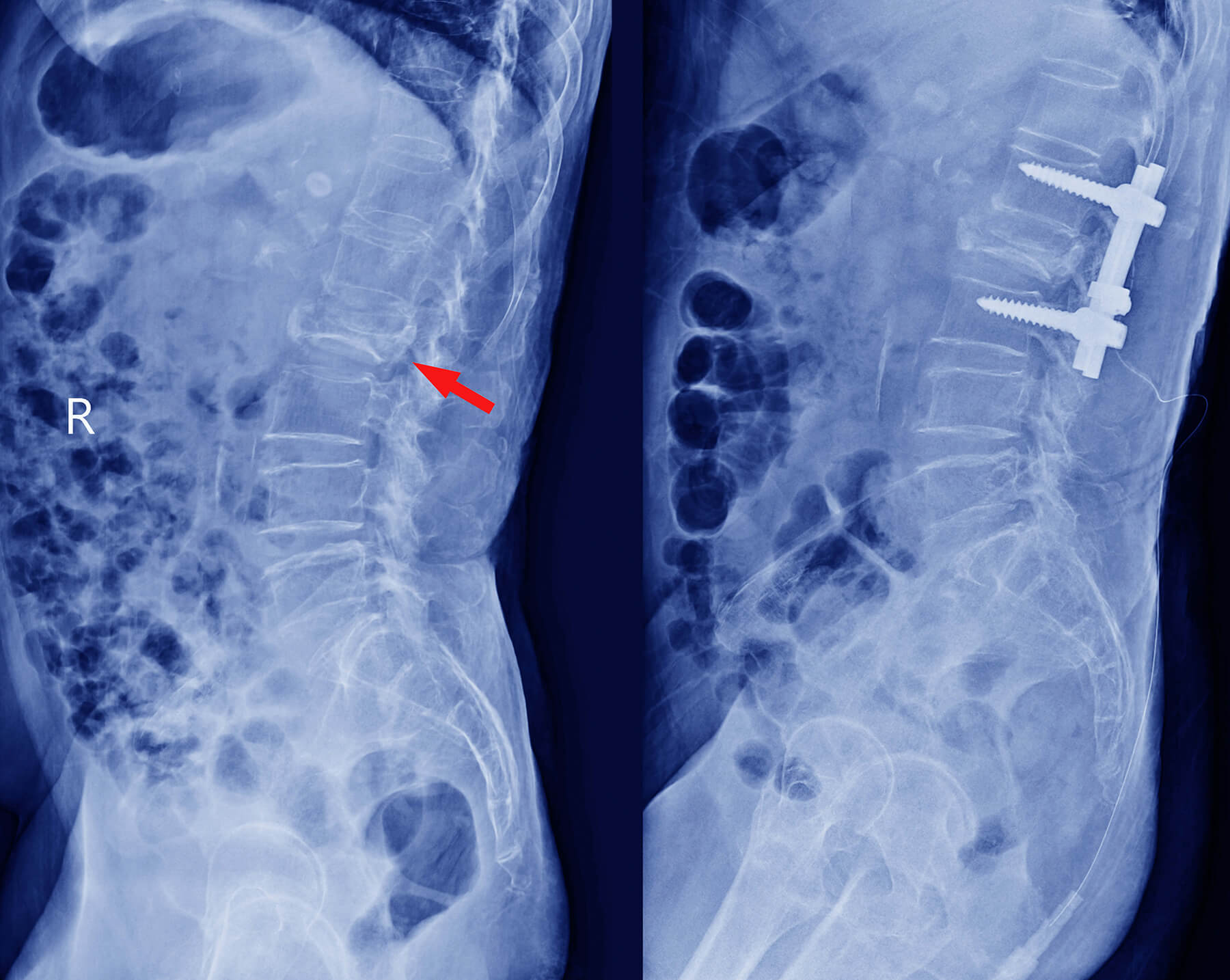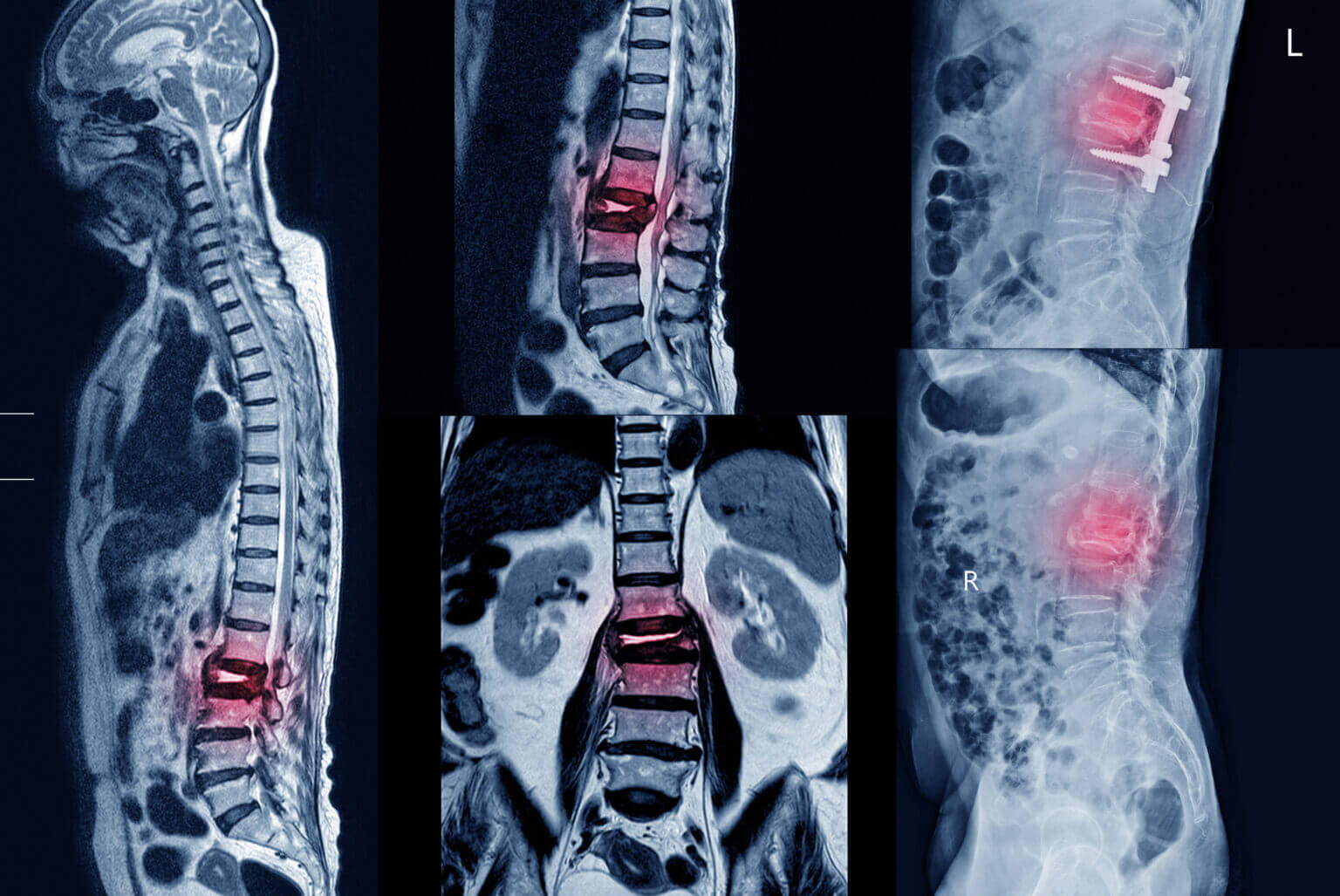

Our ServicesLumbar spine fractures and dislocations
The human spine is a complex structure that provides both mobility and protection for the spinal cord. Among its five segments, the lumbar spine-comprising the five vertebrae in the lower back (L1–L5)—bears the most weight and is particularly prone to injury, especially during trauma. Fractures and dislocations of the lumbar spine can be serious conditions that require immediate attention and careful management.

What Are Lumbar Spine Fractures and Dislocations?

1. Lumbar Spine Fractures
A lumbar spine fracture refers to a break in one or more of the vertebrae in the lower back. These fractures can range from minor compression fractures to severe burst fractures that may involve the spinal canal.
Types of fractures include:
- Compression fractures: Typically caused by osteoporosis or trauma; the vertebra collapses in the front.
- Burst fractures:Result from high-energy trauma; the vertebra is crushed in all directions, often with fragments entering the spinal canal.
- Flexion-distraction injuries: Often seen in car accidents (seatbelt injuries), where the spine bends and pulls apart.
- Fracture-dislocations: A combination of fracture and displacement of vertebrae; usually very unstable and serious.

2. Lumbar Spine Dislocations
Dislocations occur when one vertebra slips out of its normal position relative to another. This often accompanies fractures and results from severe trauma. Dislocations can compress or damage nearby nerves or the spinal cord.
Causes and Risk Factors
- High-impact trauma: Road accidents, falls from height, sports injuries.
- Osteoporosis: Weakens bones, making them more prone to compression fractures.
- Cancer or infection: May weaken vertebrae and increase fracture risk.
- Degenerative spine diseases: Can predispose the spine to instability and dislocation.
When conservative  care needs
care needs
a specialist’s touch.
touch.
Causes and Risk Factors
High-impact trauma: Road accidents, falls from height, sports injuries.
Osteoporosis: Weakens bones, making them more prone to compression fractures.
Cancer or infection: May weaken vertebrae and increase fracture risk.
Degenerative spine diseases: Can predispose the spine to instability and dislocation.
Symptoms
Symptoms depend on the severity and type of injury:Sudden and severe back pain
Numbness or tingling in the legs
Weakness or paralysis (if nerves are involved)
Difficulty walking or standing
Loss of bladder or bowel control (in severe cases)

Diagnosis
Diagnosis typically involves:
- Physical examination: To check for neurological deficits.
- Imaging studies:
- X-rays: Initial assessment for bone damage
- CT scan: Offers detailed images of bone fragments.
- MRI: Essential to assess nerve or spinal cord involvement.
Treatment Options
Treatment depends on the type, severity, and stability of the fracture or dislocation:01.
Conservative Management
- Used for stable, minor fractures.
- Involves bed rest, bracing, pain management, and physical therapy.
- Close monitoring through imaging is required.
Surgical Treatment
Indicated for unstable fractures, neurological symptoms, or dislocations.
Procedures include:
- Spinal fusion: Fusing affected vertebrae to stabilize the spine.
- Laminectomy or decompression: To relieve pressure on spinal nerves.
- Instrumentation: Use of rods, screws, and plates to restore alignment.
Recovery and Rehabilitation
Recovery time varies from weeks to months depending on the injury.
Physical therapy plays a vital role in restoring function and mobility.
Lifestyle modifications, such as posture correction and weight management, may help prevent future injuries.
Prevention Tips
Use seat belts and safety gear during driving or sports.
Maintain bone health with calcium, vitamin D, and regular exercise.
Avoid high-risk activities or use protective measures.
Address osteoporosis early with medications and lifestyle changes.
Final Thoughts
Lumbar spine fractures and dislocations are serious injuries that can lead to long-term complications if not treated promptly. Early diagnosis, appropriate treatment, and guided rehabilitation are essential to restore spinal stability and prevent disability. If you or someone you know experiences sudden back pain after trauma, seek immediate medical attention—early intervention can make all the difference.

